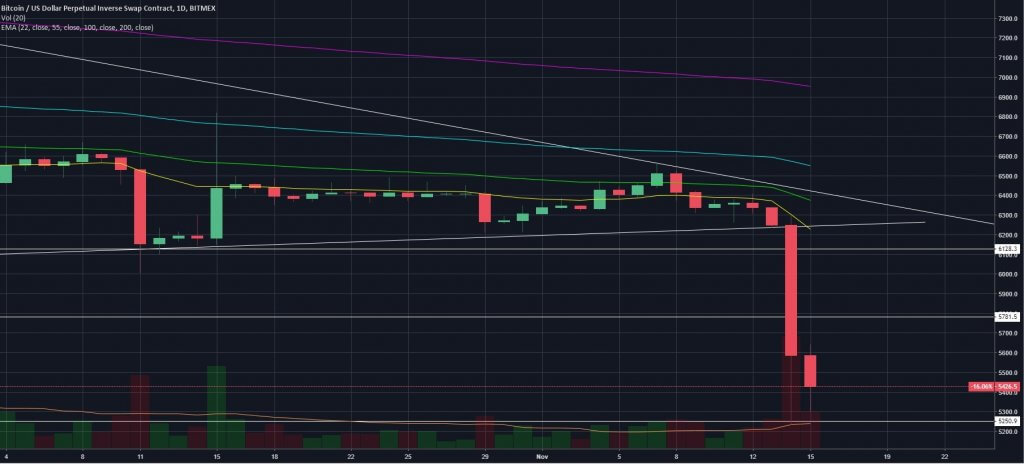Bitcoin suffered dramatic price-action to the downside on Wednesday, falling from $6,200 to $5,200 in a matter of hours, with the rest of the market following its lead.
The general consensus over the past few months has been that while Bitcoin was hovering above the yearly lows, a bull-run was just a matter of weeks away with upcoming Bakkt futures and potential ETF- approval news. But now, with those lows breached, the future of Bitcoin and cryptocurrency looks increasingly uncertain.
Why did the sell-off happen?
So why did the sell-off happen? From a technical standpoint the move to the downside made complete sense. Bitcoin had been in a period of extremely low volatility, the lowest ever in fact. Couple this with the abnormally low volume and continued testing of support, and a break down was to be expected.
Another potential catalyst was the upcoming Bitcoin Cash fork, which has seen two sides of miners locking horns over hashing power and game theory. As the drama unfolds the switch of emphasis to mine Bitcoin Cash over Bitcoin could suppress the real Bitcoin’s price.
Aside from this, the psychological stage of the market became too complacent. Many believed that Bitcoin had already been through the stages of depression, denial and even disbelief, where as in actual fact we hadn’t even seen capitulation yet.
True capitulation only happens when fear overcomes all optimism; it is when everyone involved in the market believes the asset could go to zero, and at this stage it still seems a long way off.

What’s next for cryptocurrency? Has the bubble popped?
Traders of traditional markets have always been quick to label the cryptocurrency space as a bubble. During 2014’s bear market the general consensus among the mainstream was that it wouldn’t bounce back to over $1,000, with many claiming that the bubble had already popped.
What followed was the biggest bull-run in recent history, with Bitcoin rallying through $1,000 and all the way up to $20,000. This proves that while there is almost certainly a lot of downside to come, the ‘bubble’ is far away from popping.
People are comparing the Cryptocurrency bubble to the Dotcom bubble. But the Dotcoms were real companies that at least had the potential to generate profits. Cryptos are nothing but pipe dreams. So while some of the Dotcoms recovered and made new highs, none of the Cryptos will.
— Peter Schiff (@PeterSchiff) November 14, 2018
In the long-run this sell off is a positive move for Bitcoin. A capitulation low was needed in order for a bull market to cycle back around, and while it seems inconceivable, a sharp drop to $3,000 followed by a bounce would be bullish in the long-term.
As we reflect on yesterday’s catastrophic breach of support, it’s important to be mindful about the potential outcomes. Regardless of if Bitcoin falls to $3,000 or even $1,000, the market has always responded to these moves by going on to break all-time highs, but it could be a long and bloody road ahead.
For Coin Rivet’s comprehensive guides to cryptocurrencies, blockchain technology and exchanges, click here.
Disclaimer: The views and opinions expressed by the author should not be considered as financial advice. We do not give advice on financial products.
